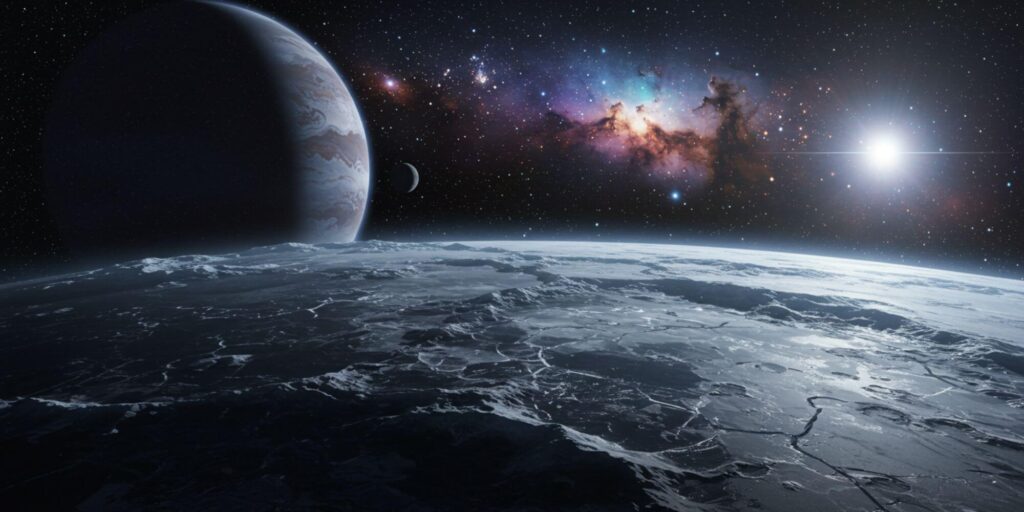As humanity looks beyond Earth in the search for extraterrestrial life, the possibilities seem more promising than ever. Thanks to modern space telescopes and interplanetary missions, we’ve discovered a growing list of planets and moons that possess conditions potentially suitable for life. While none of these celestial bodies are confirmed to host living organisms just yet, many show tantalizing signs such as liquid water, organic molecules, or habitable temperatures.
If you’re fascinated by astrobiology or just curious about where alien life might exist, here are ten planets and moons that scientists believe could support life—either microbial or more complex forms.
1. Mars (Earth's neighbor with potential)
Mars remains one of the most studied candidates for life beyond Earth. Although the surface appears cold and barren, there’s compelling evidence that liquid water once flowed on the Red Planet. Recent discoveries of subsurface ice, ancient riverbeds, and seasonal methane emissions have reignited interest in Mars as a potential habitat for microbial life.
NASA’s Perseverance rover is currently searching for signs of ancient life in the Jezero Crater, a dried-up lakebed believed to have supported a thriving aquatic ecosystem billions of years ago. While current surface conditions are harsh, underground habitats may still harbor microbial life forms protected from cosmic radiation and temperature extremes.
2. Europa (the ocean beneath the ice)
Jupiter’s icy moon Europa is often considered one of the most promising places to find life in our solar system. Beneath its thick shell of ice lies a vast subsurface ocean that may contain more than twice the amount of water found on Earth. Tidal forces generated by Jupiter’s gravity keep Europa’s core warm, possibly allowing hydrothermal vents to exist on its ocean floor—much like those found on Earth where life thrives without sunlight.
NASA’s upcoming Europa Clipper mission, set to launch in the late 2020s, aims to explore the moon’s ice crust, subsurface ocean, and chemistry to determine if it’s truly habitable.
3. Enceladus (the icy moon with geysers)
Saturn’s small moon Enceladus has captured the imagination of scientists ever since the Cassini spacecraft discovered towering plumes of water vapor erupting from its southern pole. These geysers suggest a liquid ocean beneath the surface and have even sprayed organic molecules and salts into space.
The presence of these life-essential ingredients, along with internal heat and a water-rich environment, make Enceladus a strong candidate for harboring microbial life. Future missions could fly through these geysers to sample the water directly, offering a non-invasive way to search for life.
4. Titan (Earth-like in many ways)
Titan, Saturn’s largest moon, is the only other body in the solar system known to have stable liquids on its surface. Instead of water, its lakes and rivers are composed of liquid methane and ethane, creating a landscape that eerily resembles Earth’s hydrological cycle.
While these hydrocarbons are not ideal solvents for life as we know it, Titan’s thick atmosphere, complex organic chemistry, and subsurface ocean of water make it an intriguing candidate for alternative life forms. NASA’s Dragonfly mission, scheduled for launch in 2027, will send a rotorcraft to explore Titan’s diverse terrain and study its potential for life.
5. Proxima b (a rocky exoplanet close to home)
Orbiting the red dwarf star Proxima Centauri just 4.24 light-years away, Proxima b is the closest known exoplanet to Earth. It lies within the habitable zone, meaning it could have temperatures suitable for liquid water if it possesses an atmosphere.
Despite the challenges posed by its parent star’s frequent flares and radiation, Proxima b’s location and size make it a prime target in the search for life outside our solar system. Future telescopes like the James Webb Space Telescope and others may be able to analyze its atmosphere—if one exists—for biosignatures.
6. Kepler-452b (Earth's bigger cousin)
Often referred to as “Earth 2.0,” Kepler-452b is a super-Earth exoplanet orbiting a Sun-like star about 1,400 light-years away. It resides in the star’s habitable zone and has a radius about 60% larger than Earth’s, suggesting a rocky composition with possible surface water.
While its great distance makes it challenging to study directly, Kepler-452b’s Earth-like characteristics have made it one of the most talked-about exoplanets in the search for life. Its older star might even suggest that life, if it ever emerged there, has had more time to evolve.
7. TRAPPIST-1e (a potentially habitable world in a crowded system)
The TRAPPIST-1 system, located about 40 light-years from Earth, contains seven Earth-sized planets, three of which lie within the habitable zone. TRAPPIST-1e is considered the most likely of the group to be habitable due to its size, temperature, and rocky composition.
The entire TRAPPIST-1 system is a treasure trove for exoplanet research. With so many planets in close proximity, it offers scientists a rare opportunity to study planetary atmospheres and conditions using upcoming telescopes. TRAPPIST-1e stands out for its balance of Earth-like qualities and potential for liquid water.
8. Ganymede (a giant moon with a hidden ocean)
Ganymede, Jupiter’s largest moon, is not only the biggest moon in the solar system but also a potential host for life. Like Europa and Enceladus, Ganymede is believed to harbor a subsurface ocean beneath its icy crust. What makes Ganymede particularly fascinating is its intrinsic magnetic field—the only moon known to have one—which could offer protection from solar radiation.
The upcoming JUICE (JUpiter ICy moons Explorer) mission by the European Space Agency, set to arrive in the 2030s, will focus extensively on Ganymede, searching for clues about its internal structure and habitability.
9. K2-18b (a water world with a thick atmosphere)
K2-18b, located about 124 light-years away, is a super-Earth that has drawn a lot of attention because of the detection of water vapor in its atmosphere. It orbits within the habitable zone of its red dwarf star and is believed to be a water world—a planet covered by a deep global ocean.
Recent analyses suggest it may have a hydrogen-rich atmosphere and even biosignature gases like dimethyl sulfide (DMS), which on Earth is primarily produced by living organisms. While the data is still preliminary, K2-18b is quickly becoming one of the most exciting candidates in the search for life.
10. Callisto (an underrated ocean world)
Often overshadowed by its Jovian siblings, Callisto is another of Jupiter’s large moons that may contain a subsurface ocean. While it doesn’t have the geological activity of Europa or Ganymede, its relatively stable surface and possible internal ocean make it a sleeper candidate for habitability.
Callisto’s lack of tectonic activity could be a double-edged sword: on one hand, it might mean a lower chance of hydrothermal vents; on the other hand, it offers a more stable environment, free from the radiation that plagues Europa and Io. Some scientists even propose that Callisto could be a good place for future human bases due to its lower radiation levels.
Bottom line
The idea that Earth might not be the only home for life is one of the most profound concepts in science. As we continue to explore these planets and moons, we’re not just learning about their environments—we’re also learning more about our own planet and what it takes for life to thrive. With upcoming missions to Europa, Titan, and distant exoplanets, the next few decades could finally give us the answer to the age-old question: Are we alone?
Stay tuned, because the search for life beyond Earth is just getting started.



